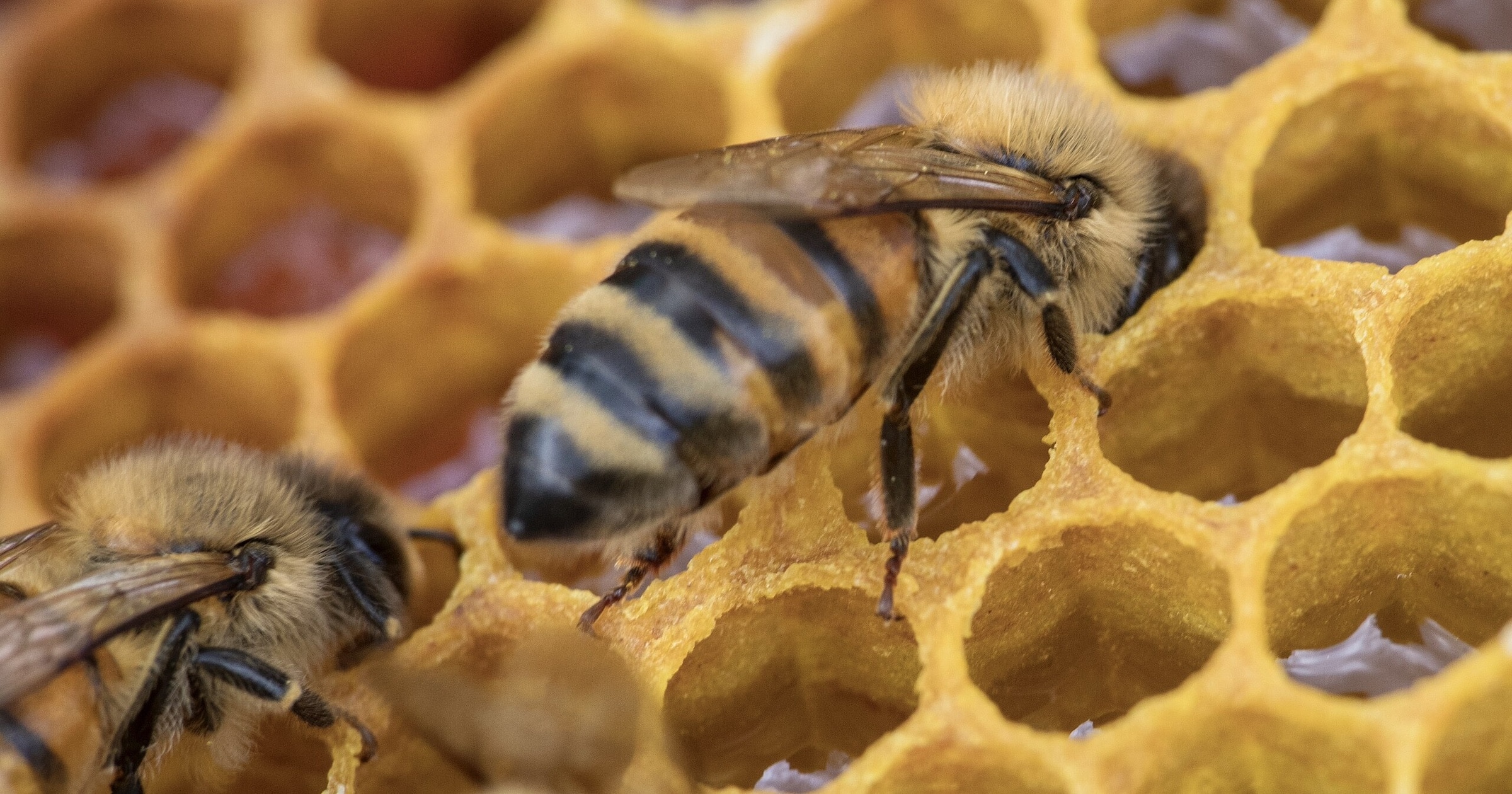 Intelligent Design
Intelligent Design
 Life Sciences
Life Sciences
New Study Reveals Secrets of Honey Bee Waggle Dance

The honey bee “waggle dance” is the method used to communicate to members of a hive information about the location of food sources as well as potential nest locations. The information includes direction and distance. One of the mysteries about the method is how other bees are able to detect the direction that the dancer bee is attempting to communicate. There are several factors that make detecting direction challenging for the observing bees. One is that the dances take place inside a dark hive. Therefore, other bees can’t visually observe the dancing bees. Second is that the surface in the hive where it occurs is vertical, whereas the direction that is being communicated is lateral. Third is that it takes place in a crowded hive with hundreds of tightly packed bees.
Do the Hustle
Previously it had been assumed that the following bees aligned their bodies with the dancing bees to determine direction. However, a new study published in Current Biology has provided evidence that the non-dancing bees (followers) utilize a more sophisticated method where they use their antennae to track the movement of a dancing bee and therefore its relative orientation.1 The followers do this by maintaining a constant angle between their antennae and the direction of the waggle dance line. As explained by the authors, “Knowing its own orientation relative to gravity, this allows the follower to deduce the dancer’s orientation relative to gravity.” The gravitational direction is a proxy for the direction of the sun, and the dance angle represents the communicated direction relative to the sun.
Another important aspect of the method is that “the dancer’s orientation remains consistent (relative to gravity) over continuously varying angles of the follower to the dancer, so that by continuous integration of this estimate” the follower can determine the direction. The paper points out that their hypothesis requires two other assumptions. The first is that bees can track their head direction relative to gravity. It is not known how gravity is represented in the bee brain, specifically within what is known as the “central complex.” The second assumption is that the bee antenna position influences information processing in the central complex. The paper points out that, “There is evidence from bees, locusts, cockroaches, and flies that mechanical signals from antennae reach the central complex.” This is a region that is common in all insects.
As described by noted bee expert Lars Chittka, the central complex, “contains the computational centers for integration of the polarized light-based sky compass, information about the animal’s own position and movement, and landmark information.”2 In other words, the central complex is the region of the brain where it appears that much of this information processing and algorithmic computation takes place.
Animal Algorithms
Recent research has also revealed that learning is integral to bee’s interpretation of the distance associated with the dance and translating that to travel distance.3 That study concluded that the distance calibration, as well as the directional component, requires fine-tuning through learning.4
As I describe in my book Animal Algorithms,5 there are several programmed algorithms designed to detect and apply the information that is used to guide the bees to specific locations. Detecting the waggle dance direction and computing the navigation guidance involves algorithms that apply several forms of mathematics, including geometry and coordinate transformation. The Current Biology paper is further confirmation of that, and an indication of a larger number and complexity of the algorithms. Even though much has been learned about these sophisticated behaviors, there are still several elements that are poorly understood, among them being how the brain’s neural networks are designed to implement the algorithms.
Notes
- Anna Hadjitofi and Barbara Webb, “Dynamic antennal positioning allows honeybee followers to decode the dance,” Current Biology, 34, April 22, 2024, 1-8.
- Lars Chittka, The Mind of a Bee (Princeton: Princeton University Press, 2022), 144.
- “Social signal learning of the waggle dance in honey bees,” Dong et al., Science 379, March 10, 2023, 1015-1018.
- Eric Cassell, “The Role of Learning in the Honey Bee Waggle Dance,” Evolution News, March 20, 2023.
- Eric Cassell, Animal Algorithms (Discovery Institute Press, 2021), 60-62.
